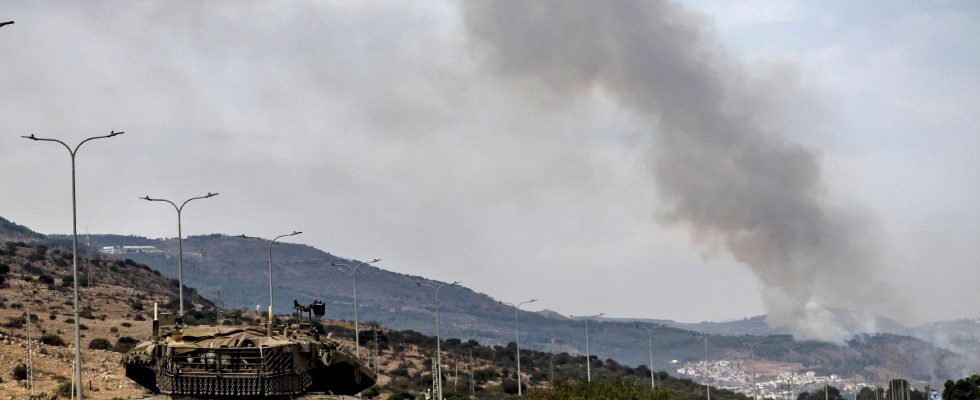How can we imagine the “day after”, when the war rages in Gazathat bombs are raining on the south of this narrow strip of land and that the hope of new releases of hostages fades with the end of the truce? There will, however, be a tomorrow, even if neither party is yet able to envisage it. Of course, it is difficult to imagine what will happen in the coming weeks, as the fog of war obscures the horizon. But the exercise is no less useful for planning ahead. Here are five scenarios that seem likely to us, in the more or less long term. They suggest the worst, but also explore hopeful perspectives. From international governance to the two-state solution, here is the range of possibilities. Third scenario in our special report: regional conflagration.
EPISODE 1 – Israel – Hamas war: the “credible” and risky scenario of an occupation of Gaza
EPISODE 2 – Israel – Hamas: the scenario of an occupation of Gaza
A dark scenario for Israel as for its Western allies: the conflict in Gaza brings in its wake a conflagration in the West Bank and the countries of the region with the entry into war of Lebanese Hezbollah and its Iranian ally. “In terms of both human lives and material destruction, it would be disastrous for all parties,” anticipates Hugh Lovatt, Middle East specialist at the European Council on Foreign Relations. “And we would witness regional destabilization which would involve Israeli, American, but also probably European interests.”
Two months after the outbreak of war, however, this scenario is not the most likely in the eyes of experts. “If a regional conflagration had had to occur, it would, in my opinion, have already occurred,” judges Jean-Loup Samaan, associate researcher at the French Institute of International Relations. However, we cannot completely rule out a risk of escalation linked to an error in the calculation of the forces present, such as a Hezbollah strike which would kill numerous Israeli civilians and lead to a ferocious response from Israel, then to a spiral of violence.”
Military superiority
In such a scenario, would the Jewish state have the capacity to cope? With its defense budget of $23.4 billion in 2022, Israel exceeds the military spending of Iran, Lebanon, Egypt and Jordan combined. Its forces can also rely on a modern and abundant arsenal including 1,300 Merkava tanks, 1,200 armored personnel carriers, 43 attack helicopters and 345 combat aircraft.
“The Israeli army is over-equipped and has cutting-edge technologies,” summarizes General Richoux, former commander of the 7th Armored Brigade. “Militarily, no adversary is able to stand up to it in the region.” Despite their threats about a possible “extension” of the war, Iran and its allies have so far refrained from crossing the Rubicon. “Iran’s calculation currently appears to be not to fully engage and to keep tension with Israel at a calculated level,” confirms Ghaith al-Omari of the Washington Institute for Near East Policy.
In addition to the skirmishes on the Lebanese border led by Hezbollah, the Houthis – Yemeni rebels who claim to belong to the “axis of resistance”, a coalition of movements hostile to Israel and supported by Iran – have launched in recent weeks several drone and missile attacks against the Jewish state, and attacked commercial ships accused of being affiliated with Israel.
American support
In order to deter any uncontrolled escalation, the United States dispatched two aircraft carriers to the eastern Mediterranean in October – including theUSS Gerald R. Ford, the largest warship in the world – each with a carrying capacity of 90 aircraft. “This is equivalent to more than half of the French fighter, notes General Richoux. They are capable of obtaining devastating military effects in a few minutes.”
Enough to encourage caution. “Tehran would expose itself to the destruction of its refineries, its port and perhaps even nuclear installations,” lists Frédéric Encel, lecturer at Sciences Po and specialist in the Middle East. As for Hezbollah, it would take the risk of losing thousands of men and infrastructure, at a time when its agenda focuses above all on Syria and Lebanon.”
In the event of regional conflict, the risk of broader internationalization should also remain limited. “China does not show any interest in intervening, underlines Jean-Loup Samaan. And Russia, apart from welcoming a Hamas delegation, also expresses more than relative interest.”
.
